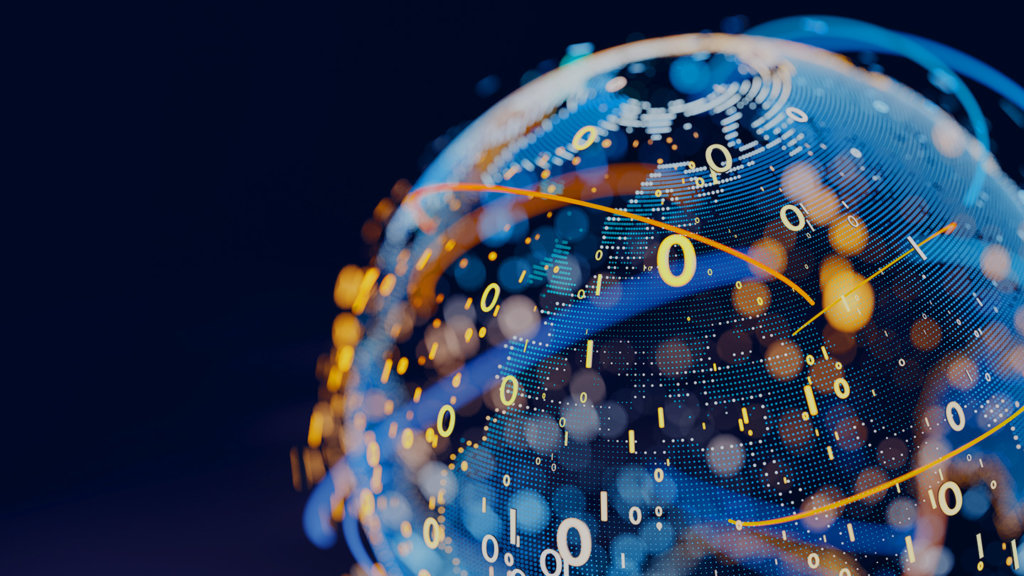Feb 15, 2024
The industrial metaverse: what to know about key technologies, correlations, and benefits

The Industrial Metaverse holds significant potential for the German economy. It’s particularly relevant across manufacturing industries such as industrial equipment and automobiles, but also in the energy, healthcare, logistics, and construction sectors. In their 2023 survey of U.S. manufacturing executives, “Exploring the industrial metaverse,” Deloitte and the Manufacturing Leadership Council found that 92% of the respondents’ companies are experimenting with or implementing at least one use case related to the Industrial Metaverse.
The industrial metaverse combines cutting-edge technologies including virtual reality (VR), augmented reality (AR), artificial intelligence (AI), the internet of things (IoT), and digital twins to generate a realistic simulation of the physical world in a digital space. It saves companies time and money by allowing them to design, plan, test, and optimize production lines without physical prototypes. In the industrial metaverse, training, remote maintenance, product design and development, and enhanced collaboration across geographical boundaries all become possible.
Certain conditions and technological foundations must be present before we can speak of an industrial metaverse. Once companies and industries have established this infrastructure, they can operate in a fully integrated digital ecosystem.
We have compiled below the key technologies that define the industrial metaverse as well as the outcomes and benefits that the industrial metaverse facilitates.
The 7 key technologies of the industrial metaverse
- Immersive technologies: Virtual reality (VR) and augmented reality (AR) are key to providing users with an immersive experience. They make it possible to simulate or supplement real physical environments and objects in the digital world.
- Digital twins: As digital representations of physical objects or systems, digital twins can analyze, simulate, and optimize existing processes before changes are made to physical equipment. They can also function as prototypes before a physical plant or a real process is created. In both cases, this saves time, labor, and energy.
- The internet of things (IoT): A machine or system is part of the internet of things if it can send and receive data to and from another network or other machines. Various technologies such as Wi-Fi, Bluetooth, Ethernet, LTE, and 5G provide connectivity. To enable data acquisition, such devices come equipped with sensors. These sensors record physical data from the environment. The data can include speed, torque, flow, vibration, energy consumption, emissions, and more. IoT devices may also have actuators that can, for instance, open or close valves. Each device has a unique name that allows other devices in the network to recognize and address it. The IoT for industrial applications is referred to as the industrial internet of things or IIoT.
- Artificial intelligence (AI) and machine learning (ML): AI and ML can analyze large amounts of data, recognize patterns, and make predictions. They support the automation and optimization of processes in the industrial metaverse.
- High-performance networking technologies: Fast and reliable data transmission is essential in the industrial metaverse. Technologies such as 5G or future network standards offer the necessary bandwidth and low latency.
- Interoperability and standards: Interoperability and common standards are necessary for different systems and technologies to work together seamlessly in the industrial metaverse. Interoperability includes data formats, protocols, and interfaces. It refers to the ability of systems to work together effectively, to exchange and interpret data, and to act correctly based on this data, regardless of their design or manufacturer. This requires standards which specify common protocols and interfaces, which in turn are the prerequisites for data transmission.
- Scalable cloud infrastructures: Cloud computing provides the necessary computing power and storage capacity to support the complex simulations and large quantities of data in the industrial metaverse.
7 advantages for companies
How does a company benefit from engaging with the industrial metaverse and creating the conditions for it?
- Efficiency gains and cost reduction: Companies that use VR, AR, and digital twins can virtually simulate and optimize production processes, leading to significant efficiency gains and cost savings.
- Increased productivity through improved collaboration: Immersive technologies and cloud infrastructures promote collaboration across geographical boundaries and increase productivity.
- Hyperconvergence for optimized resource utilization and scalability: Hyperconvergence refers to an IT framework that integrates compute, storage, and network resources into a single, software-defined platform. In the industrial metaverse, hyperconvergence enables efficient and flexible resource management. This leads to easy scalability, optimized performance, and reduced operating costs.
- Predictive maintenance instead of unplanned downtime: The interplay of the IoT, AI, and machine learning enables predictive maintenance. Predictive maintenance lets companies know a machine requires maintenance before it breaks down. This way, they can plan maintenance work in advance and reduce downtime.
- Accelerated innovation and product development: The ability to experiment and test prototypes in a virtual environment speeds up the innovation process and product development.
- Increased security and compliance: Robust cybersecurity measures and data protection practices in the industrial metaverse protect critical data and ensure compliance with applicable regulations.
- Promote sustainability and decarbonization: You can analyze material and energy flows in the industrial metaverse. Most importantly, virtual simulations can replicate resource efficiency measures, waste avoidance, and circular economy scenarios before they are physically implemented.
Continue reading:


